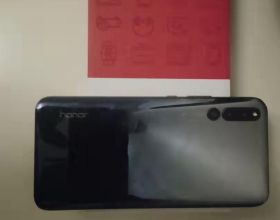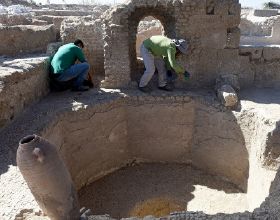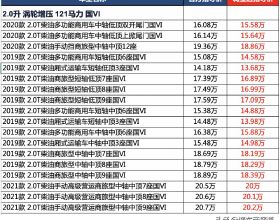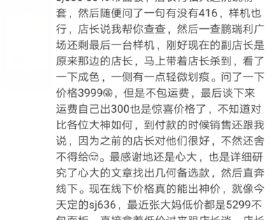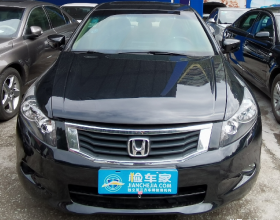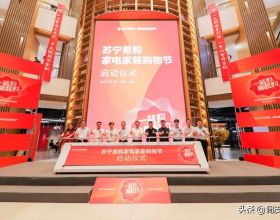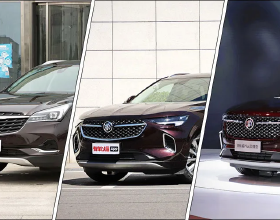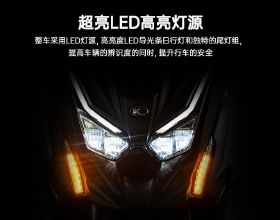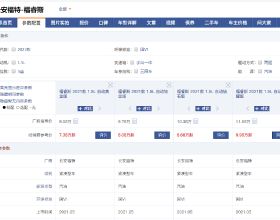編者按
曼哈頓眼耳咽喉醫院和紐約長老會醫院的主治外科醫生K. Bailey Freund教授,專攻視網膜疾病的診斷、治療和護理,主要包括黃斑變性、糖尿病視網膜病變、視網膜血管和炎症疾病,是疑難疾病和罕見病方面的專家。在APVRS 2021會議上,他分享了難治眼底病的診療進展和國家臨床試驗的科技前沿。《國際眼科時訊》有幸邀請到K. Bailey Freund教授,就老年性黃斑變性、中央性漿液性視網膜病變的治療藥物研發和給藥新機制分享了相關領域的研究亮點,探討了最先進的診斷和視網膜成像技術在臨床中的應用。
AMD和PCV領域的研究亮點
K. Bailey Freund教授指出,隨著對視網膜疾病的病理生理學相關認識的加深,主流觀點認為AMD和PCV與脈絡膜靜脈功能不全相關。這一機制能夠幫助醫生更好的理解,肥厚型脈絡膜疾病如何引起患者的眼底異常;有助於幫助醫生找到更好的治療方法,改善相關疾病導致的視力下降。相關研究人員強調了透過細化治療策略、制定個性化藥物治療方案、持續開發更好的治療藥物和新的給藥機制,達到長時間內維持患者視力的目的。
(上下滑動可檢視)
In our session, I thought that all the presentations were excellent and thought-provoking. I was very pleased to see that several of my colleagues, including Drs Chhablani, Cheung and Lee, have made great progress in refining our understanding of the pathophysiology of pachychoroid disease, which I think many of us have a growing realization that this is primarily related to choroidal venous insufficiency, and this is due to a downstream resistance at the vortex vein ampulla. Understanding this mechanism will likely lead to better understanding of how pachychoroid disease influences the fundus abnormalities we see in our patients, like the acquired vitelliform lesions that were nicely shown by Dr Won Ki Lee. This insight should help find better treatments for patients with vision loss to this disease mechanism. The other big focus in the symposium was the talks by Drs Koh, Arnold and Sadda, and they all addressed the critical importance of trying to maintain our patients’ vision over long durations by refining treatment strategies, individualizing drug treatment regimens, and then a continued focus on the development of better therapeutic agents and new delivery mechanisms.
超廣域ICG血管造影術的應用
既往研究人員使用ICG血管造影術研究探索中心性漿液性視網膜病變,研究結果表明,肥厚型脈絡膜疾病很大程度上受到了脈絡膜靜脈引流不平衡的影響。K. Bailey Freund教授及其團隊透過對比患眼與正常對照組的超廣域ICG血管造影發現,患病區域的脈絡膜厚度增加,脈絡膜血管通透性增強,並出現新生靜脈血管。K. Bailey Freund教授及其團隊的研究工作,為更好地理解疾病的發病機制及開發更好的治療方法奠定了基礎。
(上下滑動可檢視)
In my talk, I first try to review some of the ground-breaking work by prior investigators that used ICG angiography to study central serous chorioretinopathy. And then I continued by presenting the results of a recent study we did using ultra-wide field ICG angiography that showed that pachychoroid disease is very much influenced by an imbalance in the choroidal venous drainage to the vortex ampulla in the four quadrants. What we did is we compared ultra-wide field ICG angiograms from diseased eyes to a group of normal controls, and found that congestion in one or more of the vortex systems is what really seems to be associated with the primary findings of pachychoroid disease, which is regional choroidal thickness that corresponds to these dilated drainage routes, choroidal vascular permeability, and the remodeling of the venous drainage. Hopefully, with better understanding of this disease mechanism through work by our group, but also the excellent work by Gemmy Cheung, Rick Spaide and others, Jay Chhablani, who are all focused on this, we will develop better treatments for our patients.
nAMD的治療發展
Adrian KOH教授關於“抗VEGF治療新血管性AMD的挑戰”的主題分享很全面的描述了當下AMD治療技術的發展現狀。目前,抗VEGF治療是nAMD的一線治療方法。雖然抗VEGF藥物在治療nAMD方面取得了一些良好的效果,但仍存在一些不足。未來,抗VEGF藥物將朝著藥效更持久、更新穎的給藥方法發展,如最近在美國獲得FDA批准的PDS給藥系統。K. Bailey Freund教授認為,基因治療持續進展,這可能為與抗VEGF藥物或其他抗新生血管分子靶向途徑藥物,特別是補體靶向藥物,聯合治療nAMD提供了更多可能性。
(上下滑動可檢視)
I think Dr Koh nicely describes what we will be seeing going forward. These will be: more durable anti-VEGF drugs that target more than one pathway; novel delivery methods such as the port delivery system (which recently gained FDA approval status in the United States); and I think we will also see continued progress in gene therapy that may allow the cells within the eye to produce protein-based therapeutics; and possibly combining anti-VEGF agents or other anti-neovascular agents with drugs that target other molecular pathways, in particular drugs that target the complement dysregulation that seems to drive some of the atrophies that we see that often affects vision even in the neovascular cases.
抗nAMD失明的關鍵
Jennifer ARNOLD教授關於新生血管性AMD管理的現實世界結果:來自抗視網膜盲計劃的主題分享十分引人深思。Arnold教授做了一項非常出色的工作,重點分析了抗VEGF藥物治療nAMD的長期視覺結果,及導致疾病活動的生物標誌物,包括有無積液和積液位置等臨床特徵。治療方式在有視網膜下積液的眼睛表現出更好的效果,不僅僅是因為視網膜下積液本身,而是因為視網膜下積液主要發生於視網膜色素上皮變性或1型新生血管的患眼。繼發於2型或3型RAP病變的患眼會出現視網膜中央凹下纖維化但不會有視網膜下積液。正如SADDA教授在他的報告中所提到的,1型新生血管在治療後可以再現由於衰老而失去的原生絨毛膜。K. Bailey Freund教授指出,獲得更好的視覺預後的關鍵不僅要考慮患者的生物標誌物資訊,更要關注疾病的組織病理學基礎,從疾病根源保護視網膜組織。此外,最重要的是,保證黃斑的營養支援,維持黃斑的視功能。
(上下滑動可檢視)
Dr Arnold does a very nice job highlighting analyses of long-term visual outcomes for AMD treated with anti-VEGF therapy, which focused on traditional biomarkers for lesion activity that include the presence of fluid and whether that fluid is intraretinal or subretinal. Personally, I believe that the key to obtaining even better visual outcomes in our field is to think beyond some of these more traditional simple biomarkers and focus more on the underlying histologic basis for the preservation of retinal tissue, and most importantly, the need to maintain nutritional support for the central photoreceptors. Eyes with subretinal fluid do better, not just because of the subretinal fluid, but because it is really eyes that have sub-RPE or type 1 neovascularization that are the ones that have subretinal fluid. Eyes with subfoveal fibrosis secondary to type 2 or intraretinal type 3 RAP lesion would not have subretinal fluid. As Dr Sadda shows in his presentation, type 1 neovascularization can recapitulate the native choriocapillaris that has been lost through aging, and then these new vessels, which he refers to as the neochoriocapillaris, support the overlying photoreceptors for many years. So I predict that our best hope for preserving central vision in our patients will be to refine treatment regimens that innovate new strategies to promote and maintain a protective layer of type 1 neovascularization that could potentially protect our patients from central vision loss for the rest of their lives.
AMD和PCV領域的主要事件
K. Bailey Freund教授認為FDA批准的PDS給藥系統是重要並值得期待的。FDA強調了該給藥方式可能存在的安全問題,在應用該給藥系統時必須非常小心,確保在最小併發症的前提下完成藥物系統的植入。此外,根據今年公佈的資料,K. Bailey Freund教授認為可能很快會看到Faricimab獲得FDA批准,這是一種藥效更持久的抗VEGF藥物;也可能是第一種用於治療視網膜萎縮的抗VEGF藥物。雖然這種藥物不能對所有的AMD和PCV疾病有效,但其在治療中央凹萎縮的視網膜病變時療效顯著。
(上下滑動可檢視)
I think that the USFDA approval of port delivery is going to be interesting. It has some safety issues that are highlighted on the FDA label, so we have to be quite careful and ensure that the technique of insertion is done in a way that will minimize complications. I think it is possible that, based on data that came out this year, we may see approval for faricimab, another anti-VEGF agent that may be more durable, and even possibly, the approval of the first non-neovascular agent for atrophy. Although the results were not a complete home run, it definitely looked like the drug, a complement inhibitor, had a benefit, particularly in extrafoveal atrophy.
總的來說,隨著對視網膜疾病認識的不斷深入,對其發病機制瞭解的持續完善,將不斷研發更有效的給藥方式和藥物型別,幫助患者獲得更好的治療效果和視功能預後。
專家簡介
Bailey Freund
K.Bailey Freund教授專業從事所有視網膜疾病(包括黃斑變性、糖尿病視網膜病變、視網膜血管和炎症性疾病)患者的診斷、治療和護理,是疑難疾病和罕見疾病的專家。作為視網膜疾病治療的主要研究者,K.Bailey Freund教授一直處於關鍵國家臨床試驗的前沿,利用最先進的診斷和視網膜成像技術為患者提供最新的解決方案和治療方法。K.Bailey Freund教授是紐約大學醫學院眼科臨床教授,是曼哈頓眼、耳、喉醫院和紐約長老會醫院的主治外科醫生,他在本領域享有國際聲譽,是視網膜協會、黃斑協會和美國視網膜專家協會的成員,是國際視網膜成像協會(IntRIS)的創始成員和受託人。K.Bailey Freund教授Retina雜誌的編輯委員會成員,他撰寫了400多篇經過同行評議的科學手稿,並撰寫了許多書籍章節,並獲得了許多獎項,包括著名的黃斑協會青年研究者獎和美國眼科學會高階成就獎。
(來源:《國際眼科時訊》編輯部)


